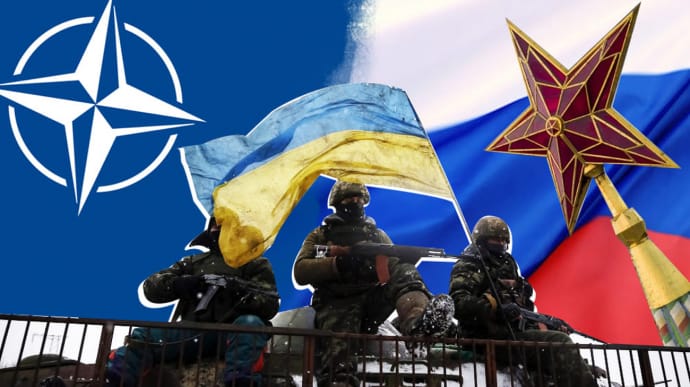Ukraine Strengthens Its Military Potential: A New Phase of the Conflict or a Path to Negotiations?

The
situation around Ukraine is entering a new stage. Western support,
technological innovations, and Kyiv’s diplomatic maneuvers indicate that the
war is becoming increasingly high-tech. However, the key question remains: will
these steps lead to a decisive military breakthrough, or, on the contrary, make
peace negotiations impossible?
The
administration of Donald Trump
has approved the expansion of military aid to Ukraine, including the supply of
the latest Patriot air defense missile
systems and enhanced ammunition packages.
In
Moscow, this move is interpreted as “a
signal of Kyiv’s intention to abandon peace talks”. Russian analysts
claim that new air defense systems will create a “closed sky” over much of Ukrainian territory, potentially
complicating any future attempts by Russia to use mass missile strike tactics.
The delivery of Patriot systems may
become a turning point in defense but does not guarantee offensive success.
However, it significantly reduces Moscow’s ability to exert military pressure,
which in the long run may push the Kremlin toward diplomacy – if the front
stabilizes.
Another important factor is that Europe has effectively taken on the financial burden of the war, allocating multibillion-dollar aid packages to Kyiv – from infrastructure recovery to arms procurement. Moscow was counting on “Western fatigue”, but the situation is evolving differently – the EU is not only maintaining its spending but also strengthening its own defense sector. Economists in Brussels openly describe Ukraine as “the EU’s geopolitical outpost in the East”, which could accelerate Ukraine’s European integration processes in the near future.
Thus,
Ukraine is turning into a “live
laboratory” for military technologies. The Brave1 platform allows Western companies to test weapon prototypes
directly on the front lines. Key areas include next-generation combat drones, automated air defense systems, and artificial intelligence for real-time battlefield analysis.
Ukrainian
soldiers already refer to Brave1 as “Silicon
Valley on the frontline” – technologies are tested in combat conditions,
and successful models are immediately scaled for mass production.
Particular
attention was drawn to reports of a planned “mega-deal” between Kyiv and Washington. The United States is
expected to purchase Ukrainian strike
drones capable of reaching targets up to 800 miles (≈1,300 km) deep inside Russia, theoretically
threatening key strategic sites. In return, Ukraine will receive new batches of
American weapons, including air defense systems and precision missiles.
This
deal could be a turning point not only for the battlefield but also for the
global arms market – Ukraine is effectively transforming into an exporter of advanced military technologies.
New
supplies and technologies could push Kyiv toward more active offensive
operations, prompting a mirror response
from Russia. Strengthened defenses and rising losses for Moscow could
lead to a stalemate on the frontlines
and the resumption of negotiations—but already on Kyiv’s terms.
Brave1
and the drone export market open a new economic niche for Ukraine – the country
could become a leading player in the
global market for drones and AI-based military technologies.
Ukraine
is betting on technological
breakthroughs and international partnerships, transforming from an aid
recipient into an active participant in the global military-tech market. Yet,
the stronger Kyiv becomes, the harder it will be to return to diplomacy: with each passing day of the war, the
temptation grows to win it on the battlefield rather than at the negotiating
table.
 Latest news
Latest news Latest news
Latest newsThe War Reaches the Caspian: Ukraine Strikes Russia’s Oil Infrastructure
12.Dec.2025
Georgia and the European Union: Transformation of Foreign Policy in the Context of European Integration
11.Dec.2025
Half of Azerbaijanis’ Income Goes to Food: Hidden Causes and Possible Consequences for the Economy
11.Dec.2025
Ukraine on the Threshold of a Political Shift: Updated Peace Plan and Zelensky’s Statement on Readiness for Elections
10.Dec.2025
Russia Proposes New Medal for Evacuating Bodies from Combat Zones
09.Dec.2025
The Shadow of Kadyrov in Yerevan: How a Woman Who Fled Violence Was Killed?
09.Dec.2025
Ukraine is Strengthening its Army amid a Growing Threat
08.Dec.2025
Ukraine Strengthens Its Army Amid Growing Threats
08.Dec.2025
Moscow and Beijing Conduct New Air-Defense Drills: What Lies Behind the Strengthening of Their Joint Shield?
07.Dec.2025
Russia–India: A New Architecture of Partnership. What Stands Behind Putin’s Visit to New Delhi?
06.Dec.2025

 16 Dec 2025
16 Dec 2025








